How does the mole in the photo
Content
- Moth species
- Moth in the wild
- Stages of moth development
- Clothes moth
- Coat molar
- Food moth
- Wax moth
A moth is always associated with a small moth of a nondescript coloration, the appearance of which in a house becomes a signal for revising all fur and wool products. However, in nature there is a large variety of these insects that can cause damage both in the apartment and in the backyard.In order to fight a pest, it is not enough to know what a mole looks like in an adult state, since its offspring is the main threat.
Characteristics of all kinds
The moth is a lepidoptera insect, whose activity begins at dusk. They are characterized by small size and narrow wings in the folded state. The wardrobe folds the wings into a triangle, the smallgill with tubules, and the ermine pyramid (see photo).
Color depends on the type of moth and habitat. For most insects, camouflage is a vital necessity in order to protect themselves from predators. The white moth, the snow moth, practically does not stand out against the background of birch, and it is difficult to look at the trefoil on the green leaves. Below is a photo of a moth living in a wild environment.
You can distinguish adults from butterflies by lack of a proboscis. In the adult stage, moths do not eat anything, and energy reserves are replenished by the substances that they have accumulated, being caterpillars. The oral apparatus of the larvae is equipped with powerful jaws, which can gnaw through even hard bones, dense seed shells, tortoiseshell, and animal horns.
Breeding features
The answer to the question of how the mole reproduces will help to take preventive measures and more effectively deal with the pest. After 5-6 hours after mating, the female lays eggs, their number varies between 50 -100 pcs. In most cases, the eggs of the moth are in the same substrate, where the whole family lives. Under favorable conditions, small worm-like appear after 6-7 days moth larvae with a whitish transparent body, the size of which does not exceed 1 mm. Optimal conditions for the development of eggs - a temperature of 30-33 ° C, at a temperature of 15 ° C, the duration of ripening may increase to 35 days.
Pregnant females almost do not fly and lead a sedentary lifestyle. In the apartment mostly males fly.
Caterpillars are also not prone to travel and are characterized by low mobility. At this stage of moth development, they molt several times, and the duration of the period can vary from 40 days to 2.5 years. Developed caterpillars begin to weave a cocoon in which it will pupate. Inside it is absolutely smooth, the outer part can be covered with small debris, insect excrement, dust particles.The pupal development stage lasts 8-28 days depending on the ambient temperature.
The full cycle of development from egg to adulthood can vary from 60 days to 2-3 years. How much an adult lives depends on its gender. Females live 7-10 days, and the duration of life itself can reach 30 days.
Description of species
On the planet there are several tens of thousands of different species of these insects. The main household pests are the following types of moths: furniture, food (grain, flour), wool, fur coat, clothes moth, fruit, potato, apple tree, cabbage, bee (wax), burdock, miner etc.
Almost every kind of plant has its own type of insect.
Room moth
Room moth is a collective term for all types of insects that can live in a house and spoil groceries and clothing. Only the power source can distinguish them; only a specialist can recognize external differences.
Clothes moth
The clothes moth is distinguished by the yellowish color of the wings with no visible ornaments. The larvae live in hollow tissues and are able to gnaw through a huge space.For a long time, their presence may be imperceptible, since they leave the outer thin layer intact. They prefer to eat cotton, wool, natural upholstery of upholstered furniture. From the waste products, food debris, microscopic dust accumulations of larvae build their own cover. The clothes moth is afraid of daylight and tries to hide in the folds of clothes or in covers. Most of the insect lives in wardrobes in dark secluded corners.
There are several ways to get rid of clothes moths and other varieties that eat clothes at home:
- Aerosol means for processing clothes are effective for the destruction of insects at all stages of development and can be used at any time of the year.
- Freezing clothes - at temperatures below 5 ° C, the entire population dies. High temperatures have the same effect, so you can get rid of the clothing moth if you hang the contaminated clothes outside on a hot day after shaking it. Some of the larvae will crumble, and the rest will die under the rays of the sun.
- Wash contaminated items at maximum allowed temperatures.
- The use of special fumigators with insecticides.
- As a means of dealing with adult butterflies used folk remedies. Strong-smelling herbs in fabric bags, hung in wardrobes with clothes, are capable of scaring off nondescript moths. But it should be understood that the flavors can not destroy the larvae and eggs.
Coat molar
Enumerating what types of moths are, one can not forget about the fur coat moth, which is capable eat fur coat, and in a short period to turn an expensive fur product into a wearable thing. Adult butterflies are characterized by small size and small black dots on the wings. White larvae. Food preferences - natural fabrics and furs.
Furniture Mole
Furniture moth is another type of indoor pests. The grubs gnaw their way through and their route of movement may look like tunnels. Term development of caterpillars depends on the nutritional value of the feed. In food with a high content of natural ingredients, the larvae grow very quickly, after 25-30 days they turn into a full-fledged mature specimen and begin to multiply rapidly.Females are very fertile - the number of eggs in one egg-laying can reach two hundred.
Distinctive signs of the food moth
The food moth is an insect from the family of moths with a characteristic pattern on the wings. An inconspicuous food moth is also found in the apartments, which can be mistaken for a pay room. The favorite habitats of this species are the kitchen and food storage facilities. The larvae eagerly eat nuts, cereals, dried fruits, and any dry food.
The parasite can not be called an excellent flyer and getting into the house of the pest from the neighboring apartments is nonsense. Most often, the insect enters the house with brought infected purchases. Temperature 25-30 ° C, high humidity - ideal conditions for the development of larvae. The food mole usually mates in its habitat, where the female lays eggs. Even in those rare cases when mating occurs at a distance from the food base, the female always returns to her eating environment.
The main harm from an insect is the deterioration of food products that become completely unsuitable for consumption.To start a fight with a domestic pest, you should immediately, as soon as the "enemy" has given its presence, then get rid of moth in croup and other bulk products will be easier:
- To conduct an audit of all food stocks. Carefully inspect the contents of all jars, containers, even if they are sealed. Buying infected cereals is commonplace. When detecting a product in which a pest has wound up, it is best to discard it. Occasionally, when the infection has not acquired a grand scale, potentially contaminated products are heated in the oven.
- The outer and inner walls of kitchen cabinets, pedestals should be treated with an insecticidal agent and ensure that it does not fall on food.
- Adults are also subject to destruction. Despite the fact that they have lost the ability to feed, they mate and multiply perfectly. Eliminate adults can be mechanically, using adhesive tapes, bait-traps.
Street moth
The types of street moths include a large number of insect species. City dwellers can often observe poplar moth, sometimes called woody moth.Moths do not harm humans, feed on poplar down and tree leaves.
Grain, cabbage, potato, gooseberry, tomato, etc. are common in agriculture. Almost every plant can "boast" of its kind of this pest.
Wax moth
Beekeepers are familiar with wax moths. Adults emit a special aroma, due to which the bees take them for their own and freely pass into the hive. The larvae feed on all the products that are in the bee house: honey, perga, wax. The infestation of hives by wax moth leads to the fact that bee families weaken and are forced to leave their habitat or die.

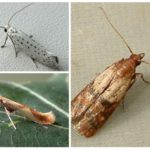
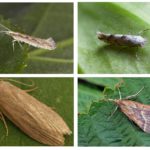
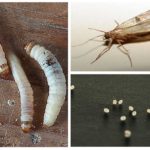
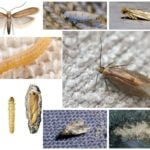
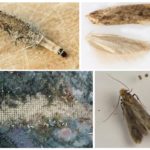
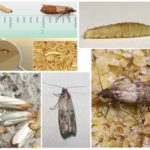
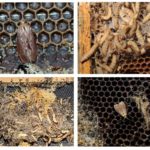
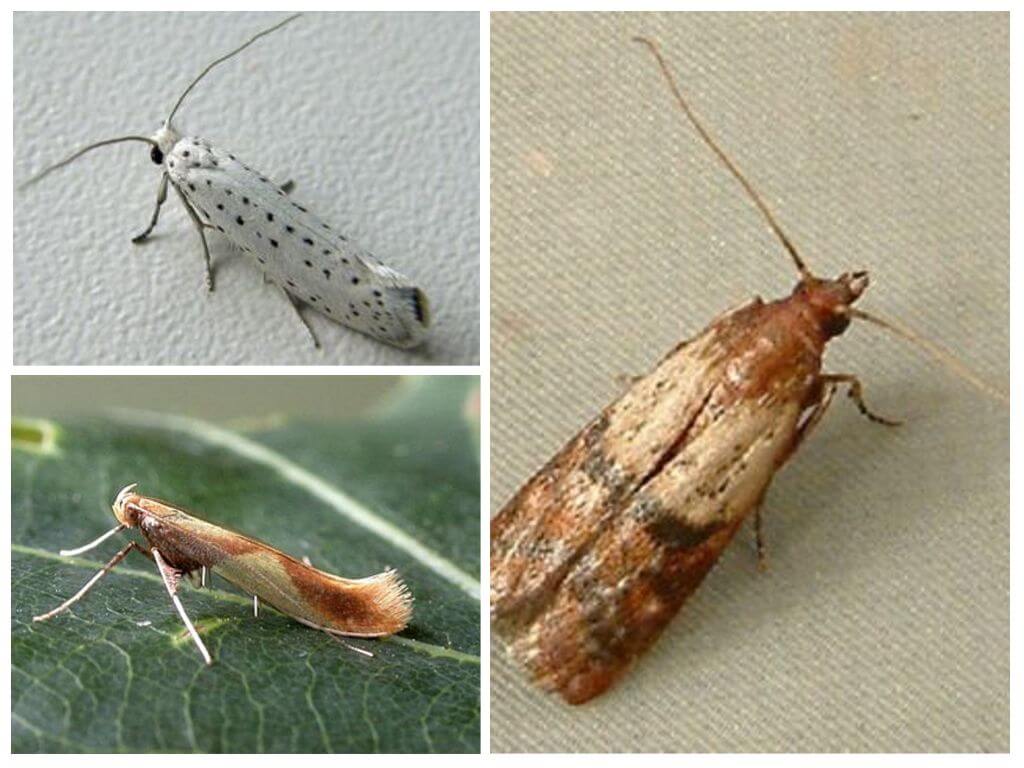
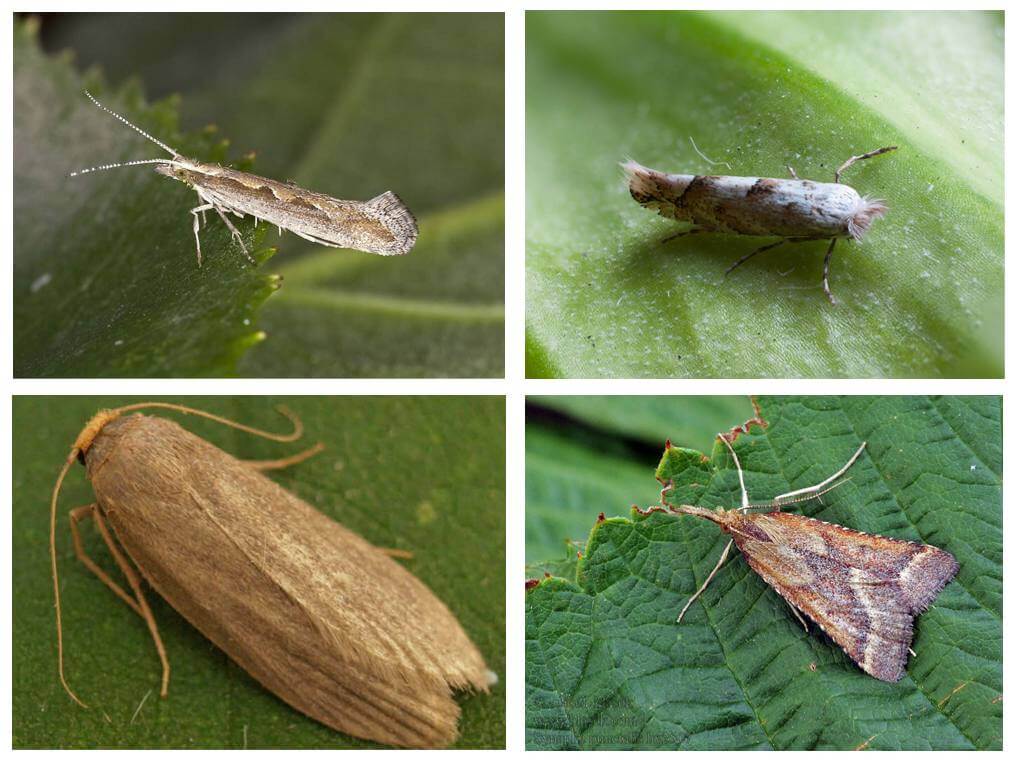

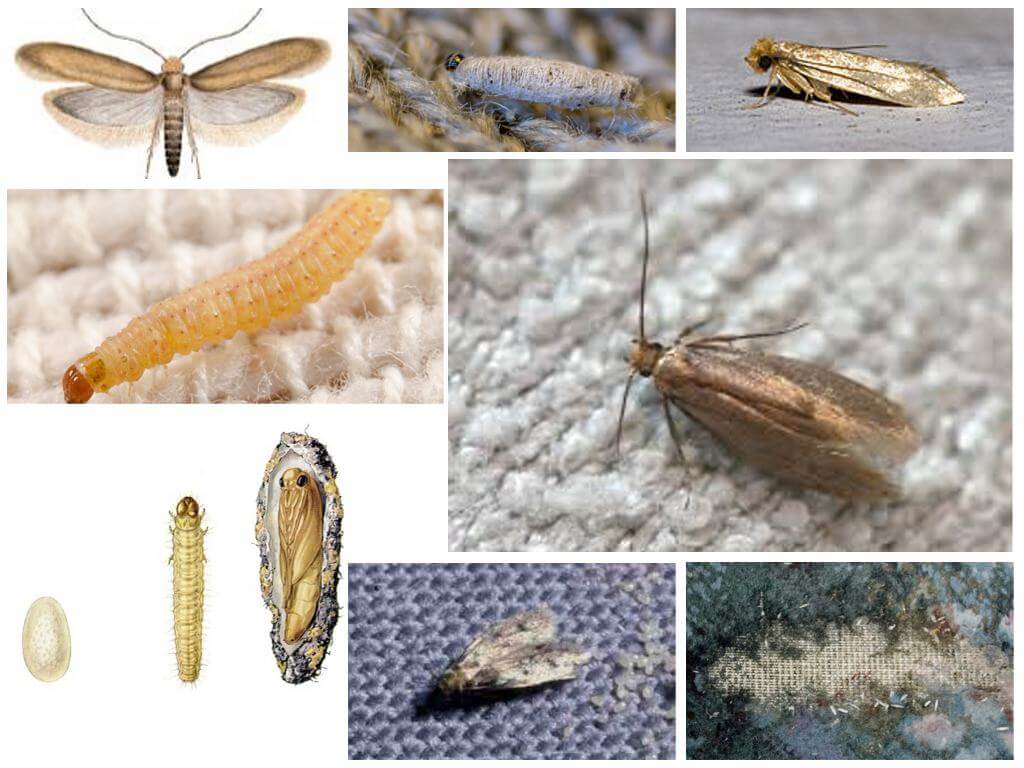

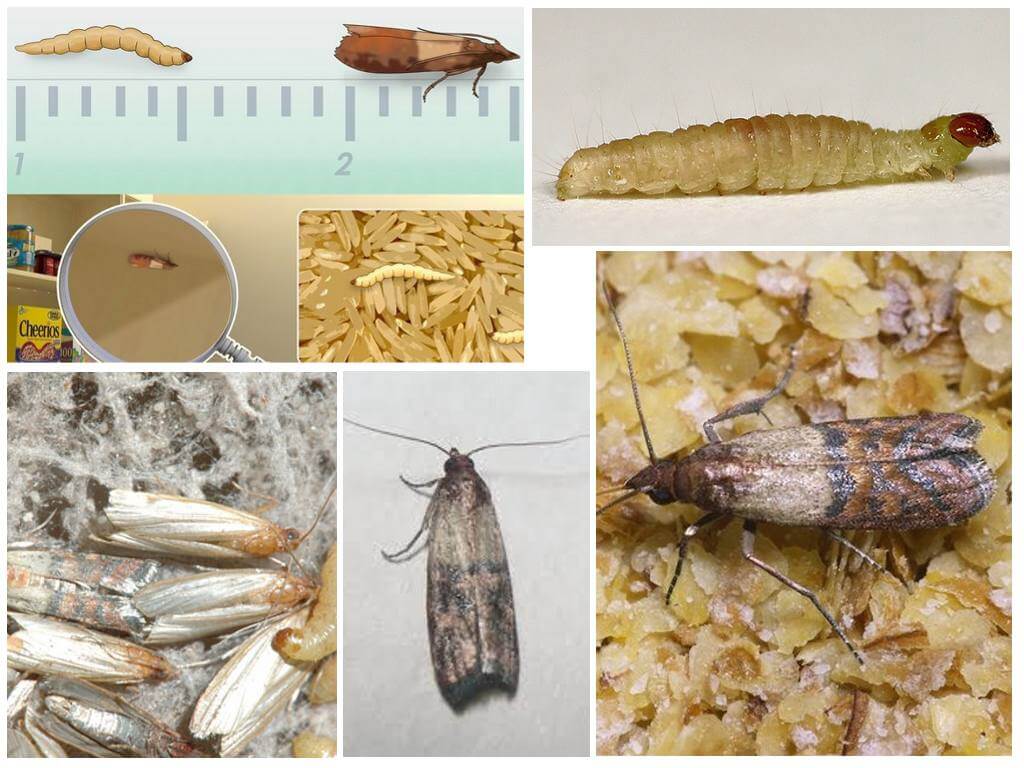
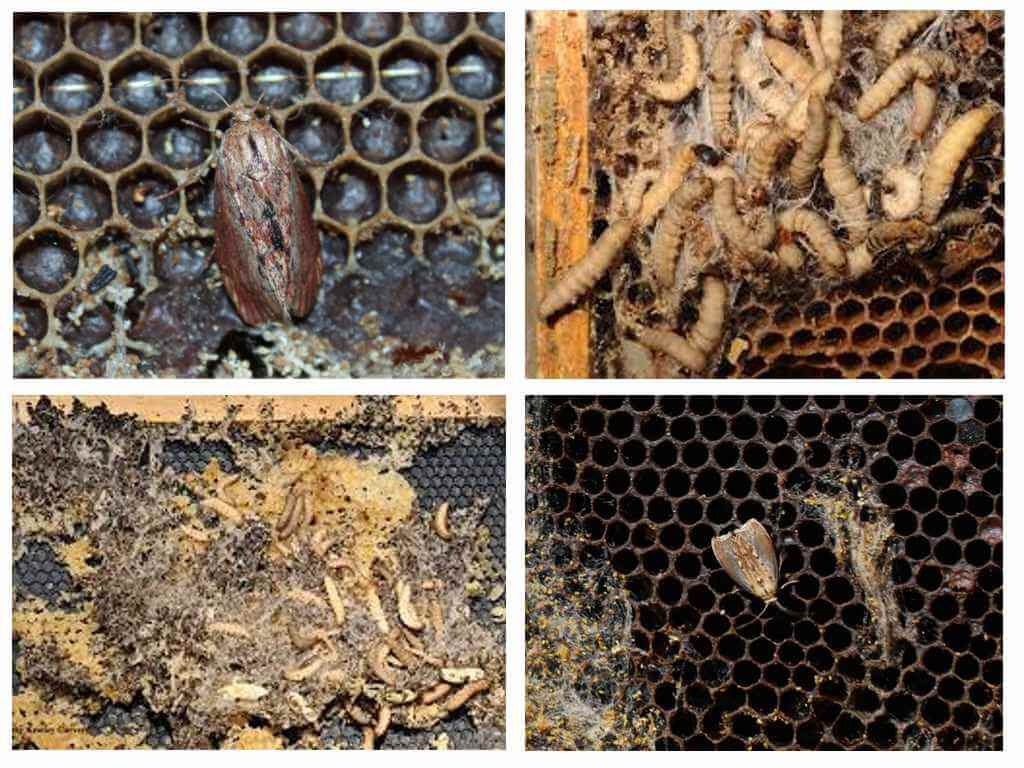

 (votes: 10, Average rating: 4.60 out of 5)
(votes: 10, Average rating: 4.60 out of 5)


